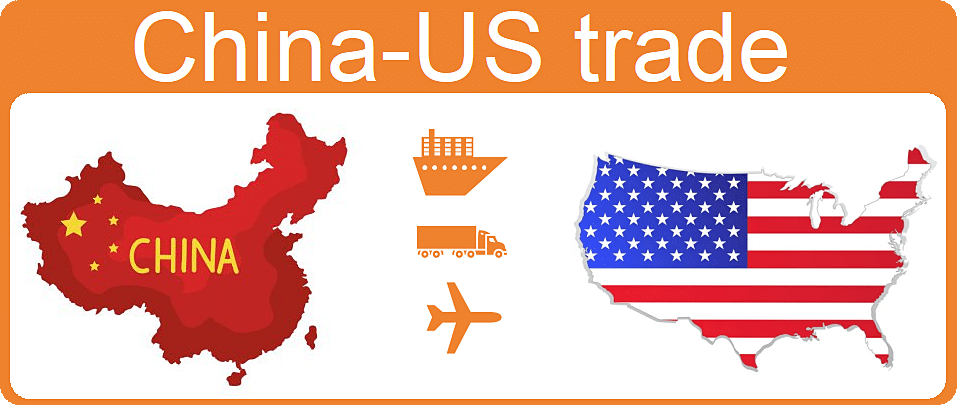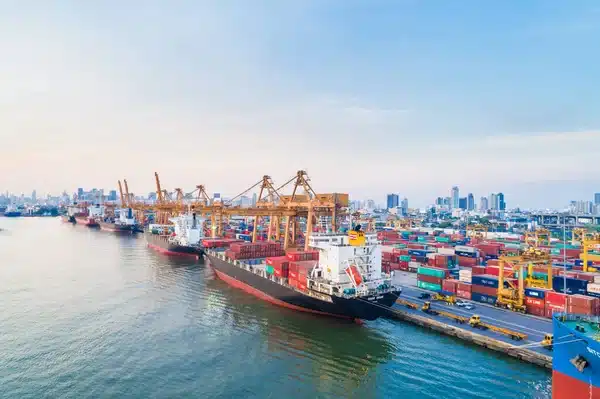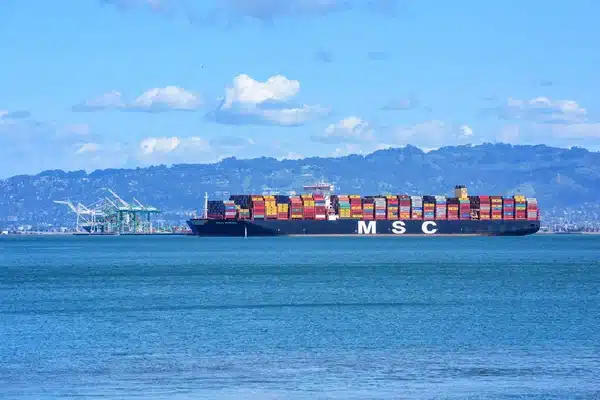On January 20, 2025, Donald Trump was inaugurated as the 47th President of the United States, marking a pivotal moment in global trade and economic policies. Known for his bold stance on tariffs and trade imbalances during his first term, his return to office signals a potential resurgence of protectionist trade policies, with wide-reaching effects on the global economy.
This development is particularly significant for key trade relationships, including those between the U.S. and China, the European Union, and emerging markets. Industries reliant on cross-border commerce, such as manufacturing, electronics, and agriculture, must brace for potential policy shifts that could impact tariffs, supply chains, and logistics operations.
In this article, we analyze the expected changes under Trump’s leadership, the implications for global trade, and actionable solutions for navigating the evolving landscape. Whether you’re a business owner, importer, or logistics professional, understanding these dynamics is essential to adapt and thrive in the changing trade environment. Discover how Tonlexing can support your logistics and supply chain needs in this challenging era.

Table of Contents
The Return of Trump’s Tariff Policies
President Trump’s return to the White House could usher in a revival of tariff-heavy trade policies, with significant implications for global commerce. His administration is likely to prioritize domestic manufacturing and reduce trade deficits, leading to changes in tariffs, trade agreements, and supply chain dynamics.
1. Global Tariff Landscape Under Trump
Potential Tariff Increases
- Industries at Risk:
Sectors like steel, automobiles, and high-tech goods are likely to face increased tariffs, particularly from countries such as China, Germany, and Japan. - Focus on Foreign Manufacturing:
Products that heavily depend on overseas production, including electronics, machinery, and consumer goods, may see new tariffs aimed at boosting U.S. manufacturing.
- Industries at Risk:
Focus on Trade Deficits
- Countries with substantial trade surpluses with the U.S., such as China, Germany, and Mexico, are expected to face heightened scrutiny.
- Potential Impact:
- New tariffs or import quotas may be implemented to reduce the trade imbalance.
- Trade surplus nations may experience reduced export volumes to the U.S., disrupting their domestic industries.
Tariff-Waiver Reviews
- Industries Affected:
Waivers granted to sectors like medical supplies and critical raw materials during emergencies could be reevaluated, potentially leading to increased costs for supply chains. - Impact on Global Trade:
- Supply chains dependent on these waivers may face higher costs or longer lead times.
- Countries heavily reliant on U.S. imports in these sectors may need to renegotiate terms.
- Industries Affected:
2. Key Global Trade Partners
European Union
- Auto Tariffs:
Trump’s prior threats to impose 25% tariffs on European car imports could resurface, targeting manufacturers in Germany, France, and Italy. - Retaliatory Actions:
The EU may respond with tariffs on U.S. exports like agricultural products (e.g., soybeans, corn) and energy exports (e.g., LNG).
- Auto Tariffs:
Emerging Economies
- India and Vietnam:
As alternative manufacturing hubs, these nations may face increased scrutiny on exports such as textiles, pharmaceuticals, and IT services. - Potential Impact:
- Higher tariffs could undermine their growing presence in the U.S. market.
- U.S. companies relying on Indian or Vietnamese suppliers may face increased costs.
- India and Vietnam:
Mexico and Canada
- USMCA Tariff Revisions:
Trump may revisit tariff structures within the United States-Mexico-Canada Agreement (USMCA), particularly in the automotive and agricultural sectors. - Impact on Cross-Border Trade:
- Increased tariffs could disrupt established supply chains, particularly for automobiles, dairy, and fresh produce.
- Both countries may retaliate with tariffs on U.S. exports, intensifying trade tensions.
- USMCA Tariff Revisions:

Focus on U.S.-China Trade Relations
Under President Trump’s renewed leadership, U.S.-China trade relations are poised to remain a focal point of global trade policy. His administration’s approach is expected to sustain or even intensify the tariff-driven strategy, directly impacting trade volumes, costs, and logistics operations.
1. Potential Changes in U.S.-China Tariffs
Continuation of High Tariffs
- Tariffs on Chinese goods implemented during Trump’s first term are likely to remain. Key affected sectors include:
- Electronics: Smartphones, semiconductors, and consumer devices.
- Machinery: Industrial equipment and tools.
- Textiles: Apparel and home goods.
- These tariffs aim to curb reliance on Chinese manufacturing and encourage domestic production.
- Tariffs on Chinese goods implemented during Trump’s first term are likely to remain. Key affected sectors include:
Current Tariffs
- The average tariff rate on Chinese imports stands at 19.3%, with many goods subject to duties exceeding 25%.
- Examples of Key Affected Products:
- Smartphones and accessories.
- Heavy machinery and parts.
- Apparel and footwear, impacting U.S. retailers and consumers.
China’s Retaliatory Tariffs
- In response to U.S. tariffs, China has imposed duties on critical American exports, including:
- Agricultural Products: Soybeans, pork, and dairy.
- Energy Resources: LNG and crude oil.
- Technology Exports: Aircraft and advanced equipment.
- In response to U.S. tariffs, China has imposed duties on critical American exports, including:
New Tariff Categories
- Trump’s administration may introduce additional tariffs on goods tied to advanced technologies, such as:
- Electric Vehicles (EVs): Batteries, motors, and charging systems.
- Renewable Energy Equipment: Solar panels and wind turbine components.
- Trump’s administration may introduce additional tariffs on goods tied to advanced technologies, such as:
2. Impact on U.S.-China Logistics
Sea Freight Challenges
- Reduced Shipping Volumes:
- Sustained tariffs may dampen demand for Chinese imports, reducing cargo volumes in container shipping.
- Fluctuating Container Rates:
- Lower volumes could lead to more competitive pricing for freight, but peak demand periods may still see rate spikes.
- Critical Ports Remain Vital:
- Major Chinese ports like Shanghai and Shenzhen will continue to dominate export logistics.
- On the U.S. side, Los Angeles and Long Beach remain key entry points but may experience congestion and fluctuating demand.
- Reduced Shipping Volumes:
Air Freight Dynamics
- Increased Demand for High-Value Goods:
- Electronics and time-sensitive products may rely more heavily on air freight to avoid delays and mitigate tariff-related uncertainties.
- Cost Surges During Peak Seasons:
- Seasonal demand and reduced sea freight volumes could push air freight costs higher, especially during holidays or major product launches.
- Increased Demand for High-Value Goods:
Customs Delays
- Stricter Inspections:
- Tariff-targeted goods are likely to face intensified scrutiny, prolonging customs clearance times.
- Compliance Challenges:
- Complex tariff classifications and documentation requirements could lead to higher administrative costs and delays for both exporters and importers.
- Stricter Inspections:
Impact on Other Countries’ Tariffs
The return of President Trump to office is expected to have far-reaching effects on global trade policies, as his administration could revive tariff-focused strategies targeting various regions. This section explores how key trading partners like Europe, emerging economies, and neighboring countries may be affected by potential U.S. tariff changes.
1. Europe
Tariffs on Automobiles and Industrial Goods:
- The European Union (EU) is likely to face renewed tariffs on automobiles, auto parts, and industrial machinery, sectors that were previously under threat during Trump’s first term.
- Potential tariff rates of up to 25% on European cars could significantly impact manufacturers in Germany, France, and Italy.
Reignited Trade Tensions:
- Increased tariffs may escalate trade disputes, prompting retaliatory measures from the EU.
- Expected Retaliatory Tariffs:
- The EU could target U.S. agricultural exports like soybeans, wine, and dairy products.
- Tariffs on energy imports such as liquefied natural gas (LNG) could disrupt U.S. energy exporters.
2. Emerging Economies
Heightened Tariff Scrutiny on India and Brazil:
Sectors at Risk:
- Pharmaceuticals: India’s dominance in generic drug production may face challenges due to higher duties or stricter FDA regulations.
- Textiles and Apparel: Brazil and India, as key textile exporters, may encounter increased tariffs affecting their price competitiveness in the U.S. market.
- Information Technology Services: Restrictions on outsourcing or higher fees for H-1B visas could impact India’s IT service exports.
3. Neighboring Partners
Mexico and Canada Under USMCA:
- Trump may revisit the terms of the United States–Mexico-Canada Agreement (USMCA) to address trade imbalances or perceived inequities in sectors like automotive manufacturing.
- Potential tariff adjustments could include:
- Automobiles and Auto Parts: Higher duties on parts sourced from Mexico or Canada to incentivize U.S.-based production.
- Agricultural Exports: Reviews on quotas and tariffs for dairy, poultry, and grains.
Impact on Supply Chains:
- Increased tariffs on Mexican or Canadian goods could disrupt supply chains in industries like construction, electronics, and food processing.
Transportation and Logistics Between China and the U.S.
The logistics and transportation landscape between China and the U.S. continues to evolve under shifting trade policies, tariffs, and market demands. Understanding shipping costs, transit times, and challenges is crucial for businesses managing supply chains in this vital trade corridor.
Shipping Costs from China to the U.S.
Sea Freight (FCL – Full Container Load):
- 20ft Container: $2,500–$3,200.
- 40ft Container: $4,500–$5,800.
- Ideal for large shipments, offering cost efficiency for high-volume cargo.
LCL (Less than Container Load):
- Cost per CBM: $150–$250.
- Best suited for smaller shipments that do not require a full container.
- Cost per kg: $5–$10, depending on the weight and urgency of the shipment.
- Recommended for high-value or time-sensitive goods like electronics, fashion items, and medical equipment.
Express Shipping:
- Premium service for small parcels, typically priced higher than standard air freight.
- Includes integrated logistics providers like DHL, FedEx, and UPS.
For detailed pricing and tailored solutions, explore Tonlexing’s platform.
Transit Times
Sea Freight:
- Duration: 25–35 days.
- Major shipping routes include Shanghai to Los Angeles, Shenzhen to New York, and Ningbo to Houston.
- Longer transit times may result from port congestion or delays in customs clearance.
Air Freight:
- Duration: 5–8 days.
- Key airports include Shanghai Pudong (PVG) and Guangzhou Baiyun (CAN) in China, with arrivals at Los Angeles International Airport (LAX) and John F. Kennedy International Airport (JFK).
Express Shipping:
- Duration: 3–5 days.
- Best for urgent shipments that require door-to-door delivery.
Challenges in Logistics
Port Congestion:
- Major U.S. ports such as Los Angeles and Long Beach often experience delays, particularly during peak seasons.
- Factors contributing to congestion include increased cargo volumes and labor shortages.
Customs Clearance:
- Stricter customs inspections for tariff-targeted goods may result in longer processing times.
- Proper documentation, including commercial invoices, packing lists, and HS code classifications, is essential to avoid delays.
Cost Volatility:
- Freight rates can fluctuate due to seasonal demand, geopolitical tensions, and changes in fuel prices.
Solutions for Optimizing U.S.-China Logistics
Plan Shipments Early:
- Avoid delays by booking space in advance, especially during peak seasons like Chinese New Year or U.S. holidays.
Leverage Multimodal Transport:
- Combine sea, air, and road transport to balance cost and time efficiency.
Partner with a Reliable Logistics Provider:
- Tonlexing offers end-to-end solutions, including sourcing, customs clearance, and tailored shipping services.
- Learn more about our Comprehensive Guide to Freight Shipping from China to the USA on Tonlexing’s platform.

Comprehensive Guide to Sourcing and Shipping from China
Navigating procurement and shipping from China requires a combination of careful planning, reliable suppliers, and efficient logistics solutions. This guide provides key strategies to streamline the process and ensure a seamless experience.
1. Procurement and Sourcing Guide
Finding Reliable Suppliers
- Online Platforms:
- Utilize platforms like Alibaba, 1688, and Made-in-China to access a vast network of suppliers.
- Filter for verified suppliers and check their credentials, such as Gold Supplier status on Alibaba.
- Supplier Verification:
- Choose suppliers with positive reviews, high transaction histories, and transparent communication.
- Use services like factory verification to assess their manufacturing capabilities.
- Trusted Procurement Agents:
- Engage a professional procurement agent to handle supplier evaluation, price negotiations, and order management.
- Online Platforms:
Product Inspection
- Third-Party Inspections:
- Arrange pre-shipment inspections through third-party agencies to verify product quality and compliance with standards.
- Sampling and Testing:
- Request product samples for evaluation before confirming bulk orders.
- Conduct necessary testing, especially for regulated goods like electronics or food products.
- Third-Party Inspections:
2. One-Stop Procurement and Shipping Services
Simplify your procurement and shipping processes by partnering with a reliable logistics provider. Tonlexing offers comprehensive services tailored to your needs.
Sourcing Assistance
- Expert support in identifying trustworthy suppliers and negotiating favorable terms.
- Access to a broad network of manufacturers for diverse product categories.
Factory Audits
- On-site inspections to ensure compliance with quality standards and ethical practices.
- Detailed reports on supplier reliability and production capabilities.
Consolidation of Goods
- Combine multiple orders from different suppliers into a single shipment to save costs.
- Ensure proper packaging and labeling to reduce transit risks.
Shipping and Delivery
- Choose from a variety of shipping methods, including sea freight, air freight, and door-to-door delivery.
- Benefit from transparent pricing and real-time tracking for hassle-free logistics.
- Learn more about our Door to Door Shipping from China to USA: A Comprehensive Guide on Tonlexing’s platform.
Solutions to Navigate Trade and Logistics Challenges
Adapting to trade and logistics challenges requires strategic planning, diversification, and leveraging efficient shipping solutions. Here are actionable strategies to mitigate risks and optimize your supply chain.
1. Diversifying Supply Chains
Alternative Production Hubs:
- Shift to Other Regions:
- Strategic Sourcing:
- Diversify suppliers across multiple countries to minimize risks from tariffs, trade wars, or supply disruptions.
Leverage Free Trade Agreements (FTAs):
- Tariff Reductions:
- Utilize agreements like the USMCA (United States–Mexico-Canada Agreement) or ASEAN Free Trade Area to benefit from reduced or zero tariffs.
- Cost Advantages:
- Review trade benefits offered by FTAs to reduce costs on raw materials and finished goods.
- Tariff Reductions:
2. Optimizing Shipping Methods
Multimodal Transport:
- What It Is:
- Combine sea, air, and rail freight to achieve the best balance of cost, speed, and efficiency.
- Benefits:
- Use air freight for urgent shipments and sea freight for bulk cargo, while rail freight offers faster transit times compared to sea freight for certain regions.
- What It Is:
Consolidation Services:
- Why It Works:
- Combine smaller shipments from multiple suppliers into fewer containers to reduce costs per unit.
- Best Use Case:
- Ideal for businesses importing a variety of goods from different manufacturers.
- Why It Works:
Cost-Effective Shipping Routes:
- Optimize shipping lanes and select carriers offering competitive rates.
- Learn more about shipping cost optimization on Tonlexing’s platform.
3. Delivered Duty Paid (DDP) Solutions
Simplified Trade Process:
- What is DDP?
- In DDP shipping, the seller or logistics provider handles all duties, taxes, and customs clearance, delivering goods directly to your door.
- What is DDP?
Advantages of DDP:
- Time-Saving:
- Eliminates the need for buyers to deal with customs procedures.
- Predictable Costs:
- All fees, including import duties, are included upfront, minimizing unexpected expenses.
- Hassle-Free Shipping:
- Ideal for businesses new to international trade or those handling small-to-medium shipments.
- Time-Saving:
Tonlexing’s DDP Solutions:
- End-to-End Support:
- From sourcing to delivery, Tonlexing manages every step of the process, ensuring compliance and efficiency.
- Customs Expertise:
- Minimize delays with professional customs clearance services.
- Explore DDP services from China to the U.S. for detailed offerings.
- End-to-End Support:

Future Outlook and Recommendations
As global trade dynamics continue to evolve under the influence of new policies, businesses must adopt a proactive approach to navigate challenges effectively. This section outlines key strategies to stay competitive and resilient in a rapidly changing trade environment.
1. Monitoring Policy Changes
Stay Informed:
- Regularly track changes in tariffs, trade agreements, and regulatory updates, particularly between key trading partners like the U.S. and China.
- Follow developments related to free trade agreements (e.g., USMCA, ASEAN) that can impact costs and supply chain efficiency.
Adapt Logistics Strategies:
- Adjust shipping schedules and routes to avoid peak seasons and high-demand periods.
- Evaluate alternative transport methods to mitigate potential disruptions caused by policy changes.
2. Building Resilient Supply Chains
Diversify Suppliers:
Leverage Technology:
- Invest in supply chain management tools to improve visibility, track shipments, and identify bottlenecks in real-time.
- Use data analytics to forecast demand and manage inventory efficiently.
Partner with Reliable Logistics Providers:
- Work with experienced logistics companies like Tonlexing to handle complex shipping needs, including customs clearance, multimodal transport, and end-to-end delivery.
3. Why Choose Tonlexing?
Comprehensive Services:
- Air Freight: Fast and reliable for urgent or high-value shipments.
- Sea Freight: Cost-effective solutions for bulk cargo.
- Door-to-Door Delivery: Hassle-free service covering sourcing, customs, and final delivery.
Transparent Pricing:
- Competitive rates with a clear cost breakdown, ensuring no hidden fees or surprises.
Expert Support:
- Customs Clearance: Minimize delays with expert handling of tariffs, duties, and compliance requirements.
- Sourcing Assistance: Access trusted suppliers and ensure product quality with pre-shipment inspections.
- End-to-End Logistics: From consolidation to delivery, we manage every step of the supply chain.
The future of global trade will be shaped by evolving policies, economic shifts, and geopolitical factors. Businesses that monitor these changes, diversify their supply chains, and leverage innovative logistics solutions will remain competitive and resilient.
Tonlexing is your trusted partner in navigating these challenges, offering tailored logistics services to optimize your global supply chain. Contact us today to ensure your business thrives in a dynamic trade environment.


